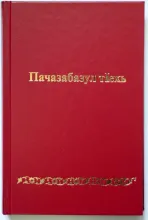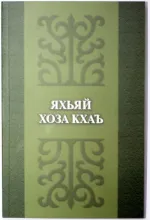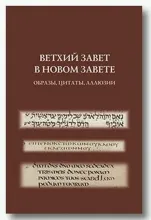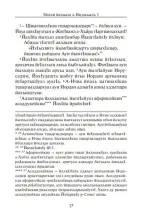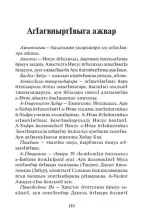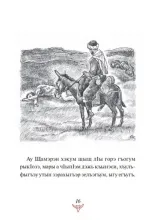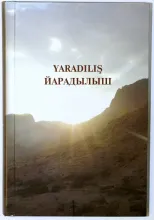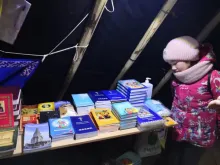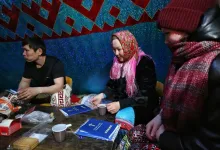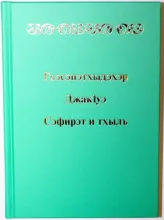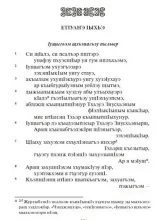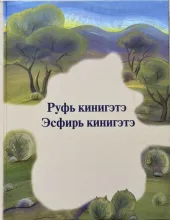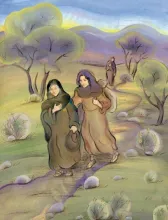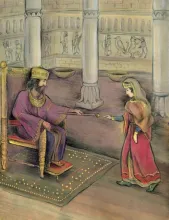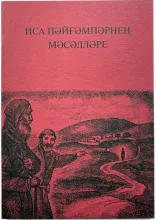news-14092021
The Institute of Bible Translation continues to publish Scripture portions from the Old Testament in the Avar language. The Avars are the largest ethnic group in Dagestan, and also live in eastern Georgia and northern Azerbaijan. In Russia there are more than 900,000 Avars, acc. to the 2010 census. Most speak the Avar language, which belongs to the Nakh-Dagestanian group of the North Caucasus language family, as their mother-tongue.
The translation of the four books of Kingdoms (or 1-2 Samuel and 1-2 Kings in the English tradition) was carried out by an IBT team that included experts in the Avar language as well as biblical scholars who checked the accuracy of the translation against the Hebrew original. The publication underwent scholarly review and was published with the stamp of approval of the Tsadasa Institute of Language, Literature and Art in Dagestan. Other Scripture portions translated into Avar by IBT include the Proverbs of Solomon (2005, 2007); the New Testament (2008); Genesis (2011); and Ruth, Esther and Jonah (2017).
news-23082020
The Institute of Bible Translation has published a new Scripture edition in the Ingush language - the first-ever translation of the Gospel of John. This follows IBT’s Ingush-language publications of Luke's Gospel (2005, 2007); the books of Ruth, Esther, and Jonah (2015); and Genesis and Proverbs (2018).
The Ingush are a Vainakh ethnic group living in the North Caucasus, primarily in the Republic of Ingushetia. The total number of Ingush in Russia is about 450,000, acc. to the 2010 census. The Gospels are known to Muslims as the Injil, an Arabic word derived from the Greek “Euangelion” (Gospel), which means "glad tidings"...
news-29062021
The Institute for Bible Translation, in partnership with Granat Publishers, has just added a new Russian-language edition to its scholarly series on Biblical Studies. This is a collection of articles on the subject of intertextuality in the Bible.
The main premise of intertextuality studies is that any particular text necessarily exists in the environment of other texts written prior to it, and reflects them to varying degrees. This characteristic of texts in general also applies to the Bible, which by its nature is a compilation of books written at different times in different places by individuals who spoke different languages. The Bible is filled with self-citations and references and allusions. The authors of the New Testament frequently quote the Old Testament; however, the cited text often conveys a slightly different meaning from that of the original text in light of the new context in which it is being used...
news-18042021
According to the 2010 census, the number of speakers of the Abaza language in Russia is 37,831 people. The Abaza live primarily in the Karachay-Cherkessia region of the North Caucasus.
IBT’s Abaza translation project is working simultaneously on the books of the Old and New Testament. A bilingual Abaza/Russian edition of Jonah was published in 2019, and Ruth/Esther came out in 2020. An illustrated collection of "Gospel Parables" was printed in 2020. And now IBT has released the first full book of the New Testament - the Gospel of Matthew...
news-04052021
IBT’s Bible translation project in the Adyghe language continues its work with the recent publication of Gospel Parables. This edition had been previously published by IBT in many other languages of Russia, such as Agul, Bezhta, Dargi, Digor, Dungan, Even, Kabardian, Kumyk, Lak, Nenets, Nogai, Rutul, Siberian Tatar, Tatar, and Tsakhur.
Besides the collection of parables from Luke’s Gospel that IBT has used in previous editions -- the Good Samaritan (Lk 10:30-35), the Rich Fool (Lk 12:16-21), the Pharisee and the Tax Collector (Lk 18:10-14), the Rich Man and Lazarus (Lk 16:19-31), the Lost Sheep (Lk 15:3-7) and the Prodigal Son (Lk 15:11-32) -- the Adyghe publication also includes several additional parables from Luke and Matthew: the Persistent Widow (Lk 18:2-8), the Sower and the Seed (Mt 13: 3-8, 18-23), the Unmerciful Servant (Mt 18:23-35), the Workers in the Vineyard (Mt 20:1-16), and the Talents (Mt 25:14-30).
news-11042021
The first book of the Old Testament, Genesis, has been translated into the Gagauz language.
Most of the Gagauz people (more than 100,000 speakers in all) live in south Moldova, particularly in the district of Gagauzia. The Gagauz, who are primarily Orthodox Christians, are already familiar with the biblical stories of the Creation, the Flood, and the Tower of Babel from worship and icon painting. Now, the book of Genesis will enable the Gagauz to get acquainted in full with these stories in their native language. Until now, the only Old Testament works available in Gagauz have been a summary of Old Testament stories published in 1907, the Psalter (1936), the IBT Children’s Bible (2010), six Psalms (IBT, 2011), and the books of Ruth and Jonah (IBT, 2017)...
news-10042021
One of the most interesting holidays celebrated by the indigenous peoples of northern Russia is Reindeer Herder's Day. It is rooted in antiquity and is timed to coincide with the Spring Equinox, when the Arctic wakes up from the long polar night. This is a real festival of culture for residents of the Yamal Peninsula: the Nenets, Khanty, Mansi, Komi, and Selkup peoples. The festival usually begins in a certain place at the end of February and is celebrated in all major cities of the region, passed on as in a relay-race from one place to another until the end of April.
news-19032021
IBT Russia has recently published a new edition of OT Scripture portions in the Kabardian language, spoken by over half a million people in the North Caucasus region of the Russian Federation. This edition contains three books of the Bible. Proverbs was first published in Kabardian in 2017 and has proved to be quite popular with readers. Ecclesiastes was published in 2020 in a bilingual edition together with a translation of this book into the closely related Adyghe language. Esther has now been published in Kabardian for the first time. The edition also includes a glossary, a subject index, and a map of Biblical places found in the book of Esther. An audio recording of these books on CD comes with the printed edition, and can also be found in the Kabardian Scripture app “ФIыцIагъэ ЛъапIэ” in Google Play and AppStore.
news-17012021
In continuation of our Old Testament translation project into Sakha (a.k.a. Yakut), the Institute for Bible Translation has published the books of Ruth and Esther in a single edition. These are the only two books of the Bible named after women, and they are being printed in Sakha for the first time ever.
The books were translated by Dmitri Sivtsev and Raisa Sibiryakova, and edited by Sargylana Leontyeva and Nikolai Efremov. The text was checked by IBT consultant Alexei Somov, and the foreword to the edition was written by Roman, the Orthodox Archbishop of Yakutia. A new set of illustrations was produced for this edition by Yakut artist Maria Adamova, who had earlier produced illustrations for the book of Jonah...
news-18012021
The Institute for Bible Translation has just published the second book of Scripture portions in Siberian Tatar. Following the book of Jonah, which came out in the beginning of 2020, the present publication contains a collection of nine parables from the Gospel of Luke: the Parable of the Sower (8:4-15), the Good Samaritan (10:29-35), the Rich Fool (12:16-21), the Pharisee and the Tax Collector (18:9-14), the Rich Man and Lazarus (16:19-31), the Wedding Feast (14:15-24) , the Lost Coin (15:8-10), the Lost Sheep (15:3-7) and the Prodigal Son (15:11-32).
Gospel parables are allegorical lessons and examples borrowed from nature and everyday life. Jesus Christ (known as the Prophet Isa in Muslim ethnic groups such as the Siberian Tatars) often used such short, simple stories in his sermons. They may seem to be about ordinary life situations familiar to anyone, but Jesus uses them to communicate profound spiritual truths...

